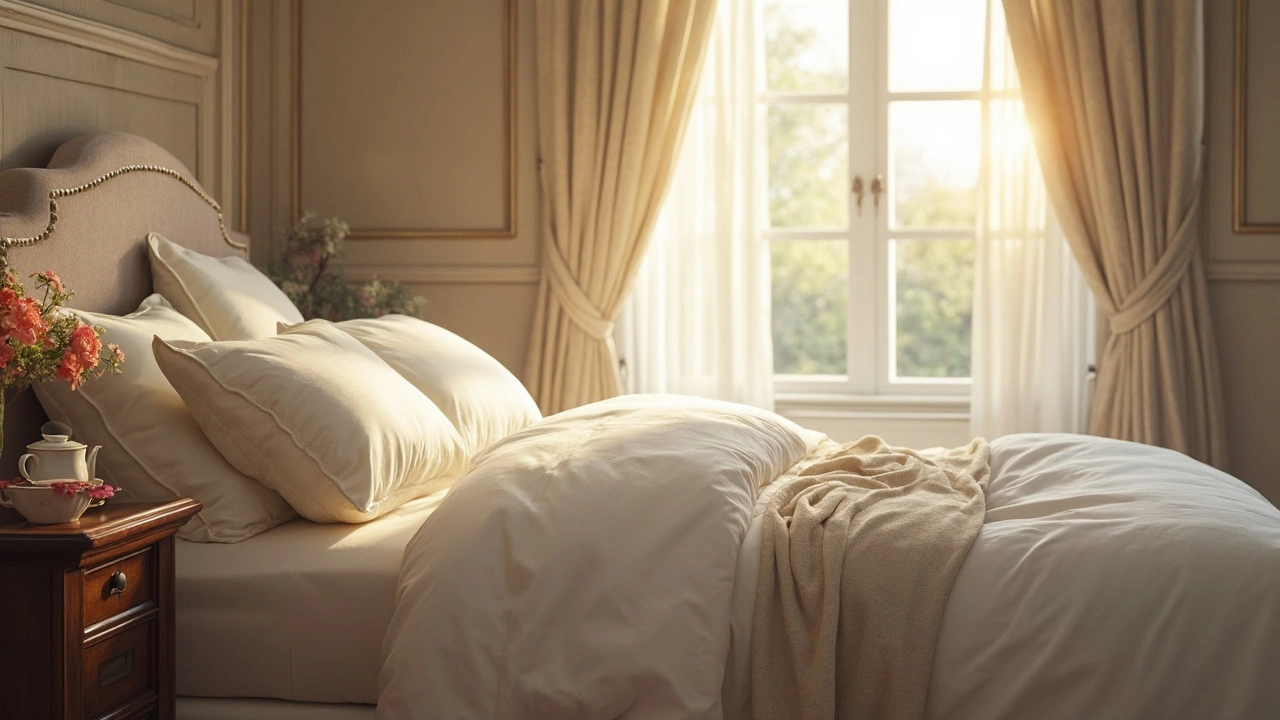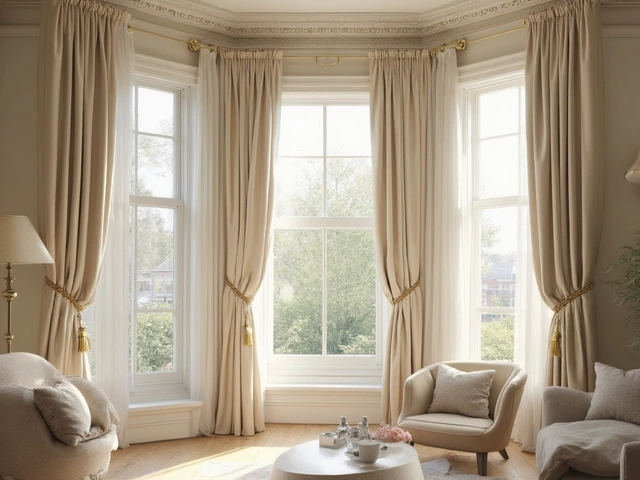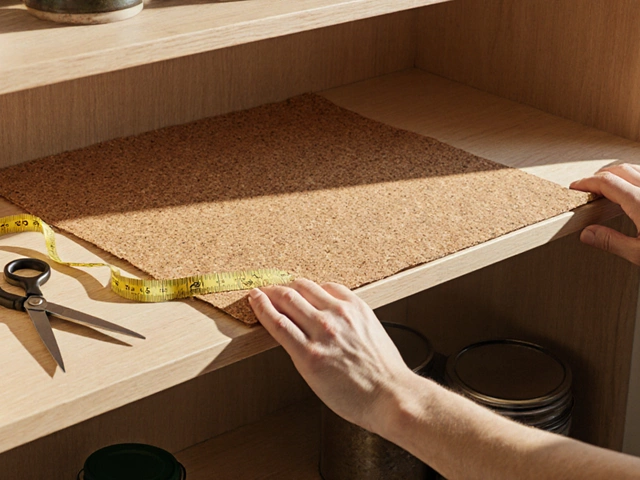Bedding isn't just a one-size-fits-all term. You might hear friends calling it 'bed linen' or 'bedclothes,' and wonder if there's more to it. Spoiler alert: there is! These terms might seem interchangeable, but they each have their own roles in our bedrooms.
Whether you're a bedding newbie or a seasoned pro, understanding these terms can make your shopping experience smoother and might even upgrade your snooze game. The basics? Bedding usually covers essentials like sheets, pillowcases, and covers, but that's just scratching the surface.
Next time you're picking out a new set, think about the feeling you want. Cotton sheets? Comfy. Linen? Breezy. And that's just the beginning! Think of it like curating the perfect setup for your ultimate nest.
- Introduction to Bedding Terms
- Different Types of Bedding
- Common Names and Their Meanings
- Tips for Choosing the Right Bedding
- Caring for Your Bedding
Introduction to Bedding Terms
When it comes to making your bed cozy, it helps to know the right bedding terms. Let's break down the basics of what you might encounter in a store or online. After all, there's no need to get tangled up in the names when you're just trying to have a better night's sleep.
The term bed linen often pops up along with words like sheets and pillowcases. But why call it linen when it's not all made of linen? Ah, that's just a historical twist! Bed linens originally referred to anything made from linen fabric, which was popular back in the day. Now, it covers all the fabric stuff you toss on your bed.
And then there's the word bedclothes, which might sound like your bed is dressing up for an occasion. It's not as common nowadays, but it still refers to the essentials like sheets, blankets, and sometimes quilts. Think of bedclothes as everything that covers your bed, from under the mattress to over the duvet.
Let's not forget the specific types of bed sheets—you’ll usually find them split into fitted and flat sheets. Fitted sheets come with elastic corners so they grip your mattress like a snug hug. Flat sheets, on the other hand, lie directly under your blanket or comforter, offering an extra layer of comfort and cleanliness.
Lastly, the industrial term beddings might come up when referring to bedding sets or collections. A bedding set typically includes sheets, pillowcases, and often a duvet cover to give your room a coordinated and tidy look. It's a one-stop-shop situation for your bed's outfit!
Different Types of Bedding
When it comes to decking out your bed, knowing the bedding options can feel like learning a new language. There’s more to it than just randomly picking bed sheets and bed linen. Let's break it down and figure out what fits your lifestyle best.
Sheets
Sheets are the base layer everyone knows about. You've got two main players here: the fitted sheet and the flat sheet. Fitted sheets come with elastic edges, making them perfect for laying over the mattress. Meanwhile, flat sheets sit between you and your comforter. Pro-tip: Cotton sheets are mega popular for their breathability and softness.
"Choosing the right sheet can transform your bedtime routine from humdrum to heavenly," says Joanna Lewis, a sleep expert from Sleep Institute NZ.
Pillowcases
Pillowcases are like the lipstick of your bed linen ensemble. They protect your pillows and add style to your bed setup. Matching them with your sheets can really tie the room together. Silk pillowcases are gaining popularity for their skin and hair benefits.
Duvet and Duvet Covers
When it comes to warmth, nothing beats a duvet. It’s like a big, fluffy cloud, offering serious warmth during colder nights. The cover protects this fluffy wonder and can be swapped out depending on your mood or the season.
Blankets and Throws
These are the MVPs for adding warmth and a pop of color. Whether draped over a comforter or wrapped around you on a lazy day, blankets are versatile and come in various materials like wool, fleece, and knit.
Comforters
A comforter is similar to a duvet but comes sewn together with filling inside. They usually come as part of a bedding set, making them the simplest choice for a unified look.
Investing in the right bedding pieces isn't just about comfort—it's about expressing your personal style and creating a space that feels uniquely yours. Remember, taking care of your bedding maintains its feel and longevity, so always follow wash care instructions.
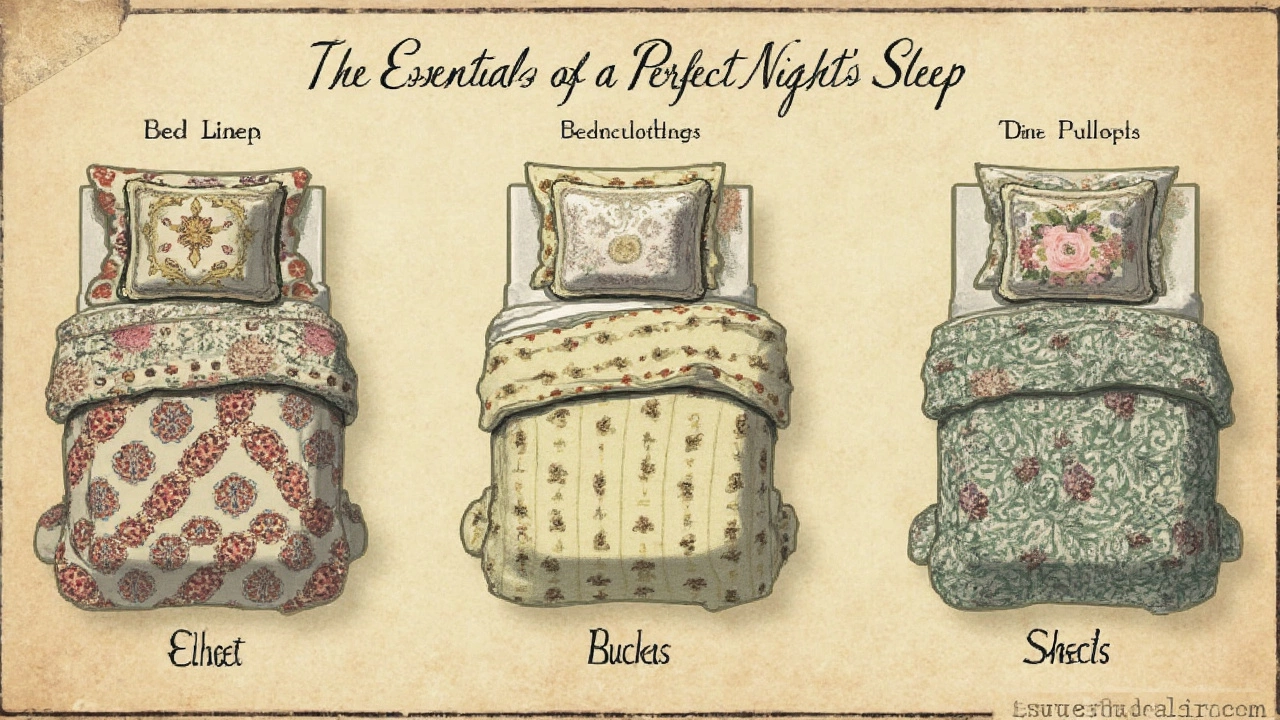
Common Names and Their Meanings
When you're strolling down the bedding aisle, you might feel like you've entered a whole new world of terms. Let's decode the common names you might stumble upon.
Bed Linen
Often, people use the term bed linen to talk about the fabric items you cover your bed with. This typically includes sheets, pillowcases, and sometimes even duvet covers. It's mainly named for the linen material originally used, although that’s not always the case today.
Bedclothes
Bedclothes is another term that gets thrown around. This one's a bit more old-school and refers to anything fabric-related on your bed, like sheets, pillowcases, and covers. It's like saying 'clothing' for your bed, pretty cute, right?
Bedding Set
A bedding set usually means a package deal, often including sheets, a pillowcase, and sometimes extras like a comforter or duvet cover. It's a neat way to get everything matching without picking out each piece separately.
Fitted and Flat Sheets
Let's dive into sheets. You have fitted sheets, which have elastic corners that grip your mattress snugly. They're the base layer. Then there are the flat sheets, the top layer you sleep under. These sometimes double as light covers in warmer weather.
Pillow Shams
Unlike pillowcases that you use to sleep on, pillow shams are more decorative, often coming with flanges or borders that add that extra pop to your bed ensemble. They’re like accessories for your bedroom!
Knowing these terms helps when shopping or chatting about bedroom decor. It's like having the right tools in your toolbox. Ready to transform your bed setup?
Tips for Choosing the Right Bedding
So you're in the market for new bedding. No pressure, right? Picking the perfect set doesn't have to be a hassle if you know what you're looking for. Let's break it down.
Material Matters
First things first, think about the material. Cotton is a go-to for many folks because it's breathable and easy to wash. But if you've got your heart set on something luxurious, consider Egyptian cotton or silk.
Then there's linen, which is perfect for that cool, laid-back feel. Just remember, linen can be a bit wrinkly, but that's all part of the charm!
Thread Count
Thread count can be a hot topic, but it's not as complicated as it sounds. Anything from 200 to 400 is usually comfy enough. Anything beyond that? You're talking hotel-style luxury.
Size and Fit
Make sure you know the size of your bed. Sounds obvious, but mismatched sizes mean either too-tight sheets or ones you're forever tucking in. Double-check dimensions before you buy.
Design and Style
Don't forget style! Your bed sheets should match your vibe. Whether you love bold patterns or minimalist tones, there's something out there for you. Mix and match or stick to a theme; it’s your call!
Consider the Season
Some materials are better for different times of the year. Flannel sheets are great for winter warmth, while satin sheets can keep you cooler in the summer. Switch it up according to the weather for better sleeping conditions.
In a survey by Sleep Foundation, about 35% of people admitted that a comfortable bed is key to a good nights' sleep, so investing in the right bedding is worth it.
Following these tips will help you pick out the best bedding fit for your sleep style. Happy shopping, and may your nights be cozy and restful!
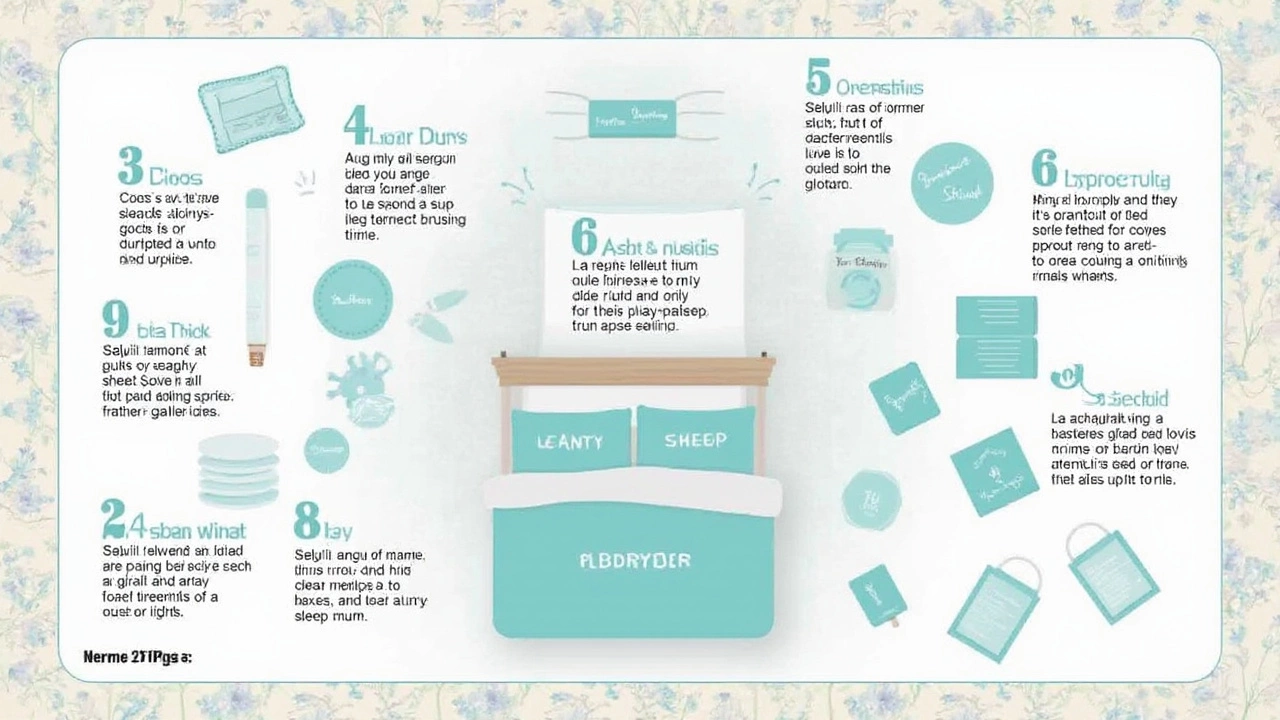
Caring for Your Bedding
So, you've invested in some cozy bedding, and now it's time to keep it fresh and long-lasting. Let's tackle the basics of maintaining those bed sheets and other essentials.
Washing Tips
Most bed linen should be washed every one to two weeks. Yep, even if they don't look dirty. Here's a little laundry guidance:
- Read the Labels: Always check care instructions. They'll guide you on temperature settings and any special precautions.
- Use Gentle Detergents: Opt for mild detergents to preserve the fabric's color and feel.
- Mind the Temperature: Hot water can damage some fabrics, so lukewarm or cold cycles are usually safer bets.
Drying Best Practices
Once washed, drying is just as important:
- Line Dry When Possible: Nature's the best dryer. If you can, hang them outside and enjoy that fresh scent.
- Tumble Dry with Care: If using a dryer, go for low heat to avoid shrinking or damaging the fibers.
Storage Solutions
Even storing your bedding right can make a difference:
- Cool and Dry Location: Moisture is a no-go. Storing in a cool, dry spot prevents mold and mildew.
- Rotate Regularly: Give all your bed sheets an equal amount of love; rotating them means less wear and tear on just one set.
Skipping the right care can mean spending extra money on new sets sooner than needed. So, a little attention goes a long way. After all, who wouldn't want to keep diving into fresh, clean sheets night after night?

